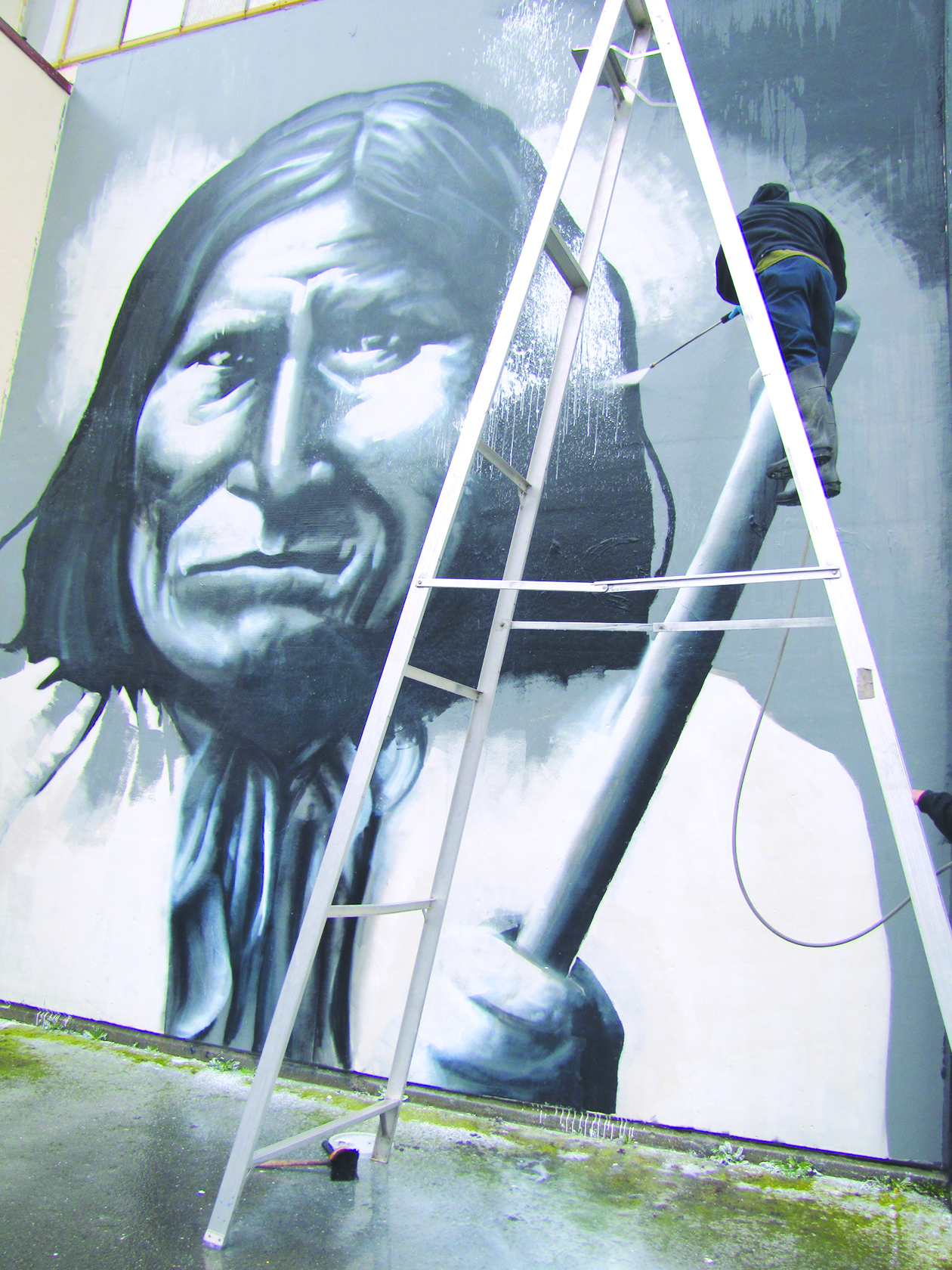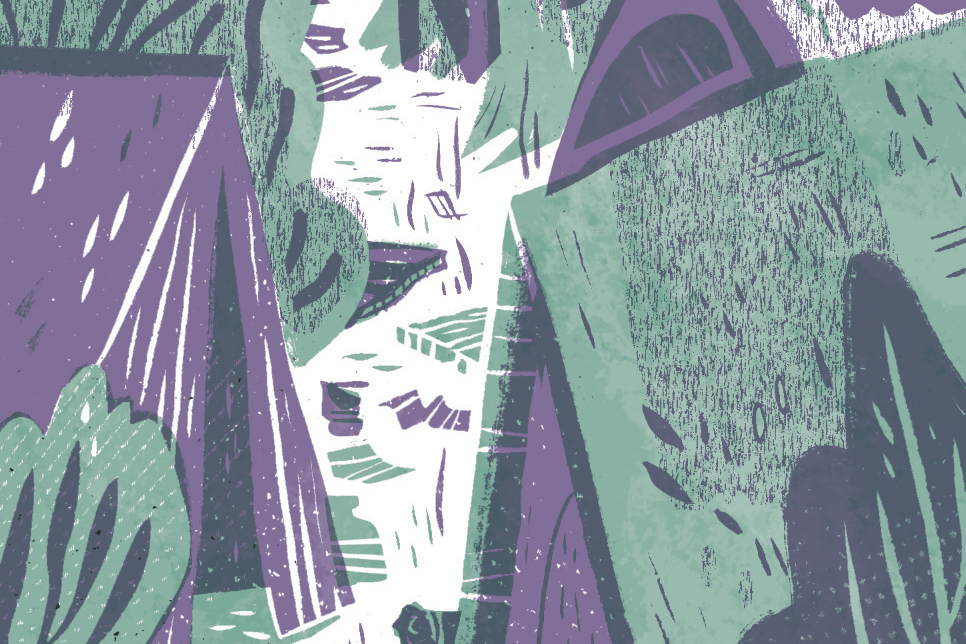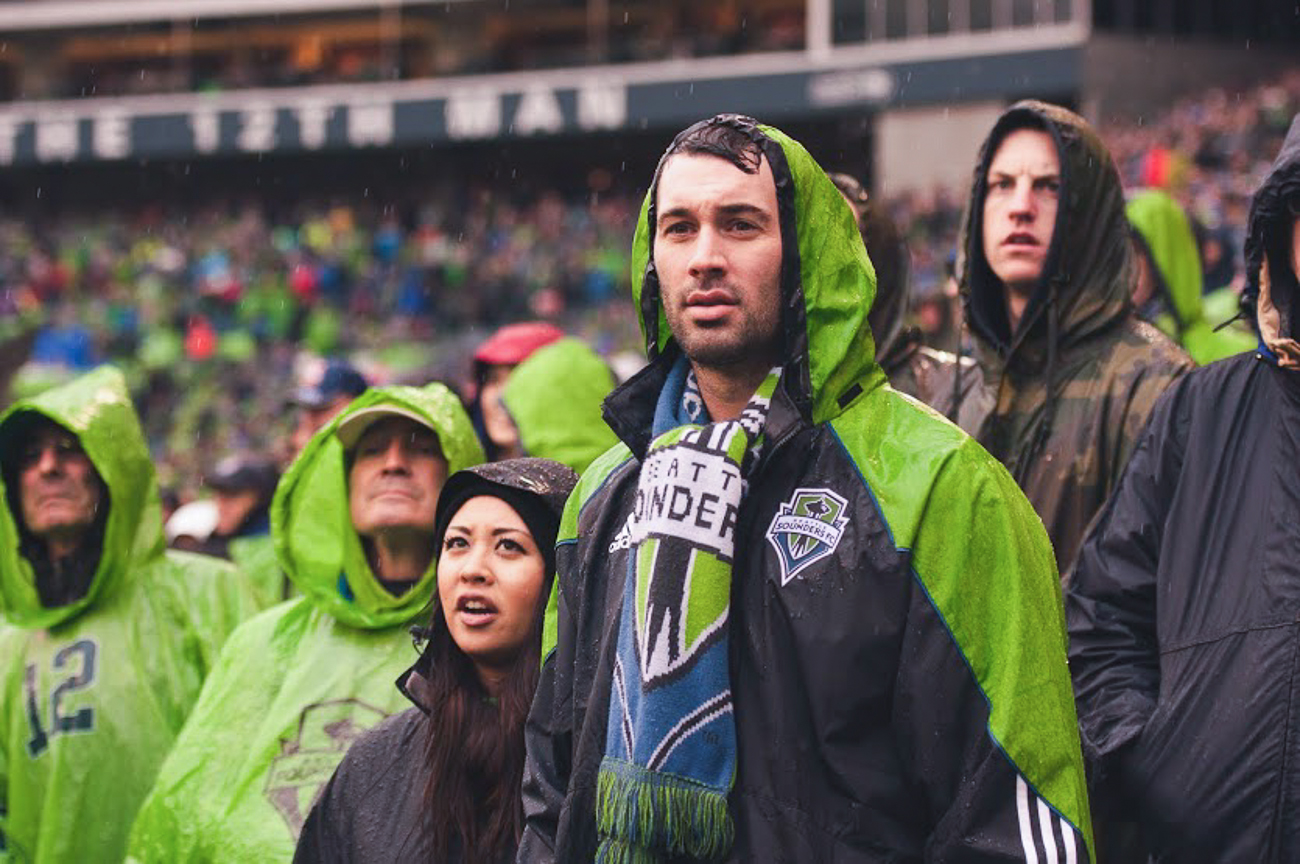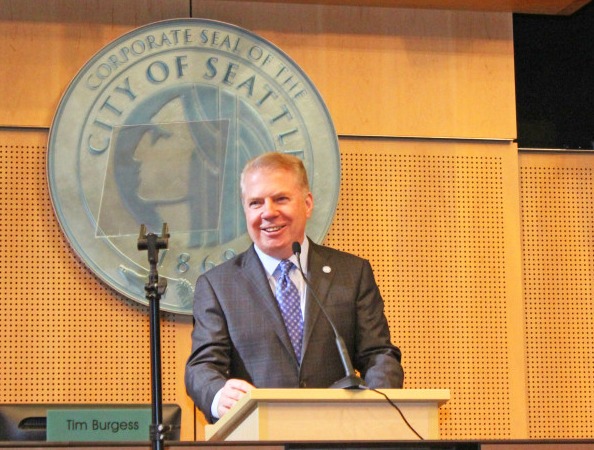The news came via a cryptic text message from a friend. As Andrew Morrison recalls, it read simply: “Hey, something happened to your murals.”
That was the night of Sunday, Feb. 22. The next morning an understandably alarmed Morrison drove from his home in Auburn to north Seattle and the Seattle School District’s Wilson-Pacific building, where his seven iconic murals depicting the Native American leaders Chief Sealth, Chief Joseph, Geronimo, and Sitting Bull have been a source of pride for the area’s Native American community for more than a decade.
As Morrison soon discovered, the text message proved accurate. Something had happened to his murals. And it wasn’t good. By that afternoon, aided by photos of the vandalism quickly spreading across the Internet, it felt as though all of Seattle stood aghast in confusion and anger.
In splattered, indiscriminate white paint, some of it sprayed as high as 25 feet, the word DAPKILO was smeared across the faces of all four chiefs. According to Seattle police, DAP is an acronym for Down Around Pike, one of the 10 to 20 active graffiti crews in the city. KILO, officials says, is likely the vandal’s name—the person responsible for the most high-profile tagging in recent memory, one that struck a chord throughout the region and among Seattle’s proud Native American community.
“Literally, I could barely stomach it,” recalls Morrison. “I knew a crime had been committed. I knew this was a vindictive hate crime. . . . The murals represent love, and they represent a pure innocent compassion, and the exact opposite of love is hate. The murals represent light, and the opposite of light is dark. The murals represent forgiveness, and the opposite of forgiveness is revenge. They represent hope, and the opposite of hope is desecration and depression.”
“Only a very demented individual would try to tarnish such a pure image,” Morrison continues. “It was a crime against humanity.”
According to the letter fo the law, it was also probably a simple misdemeanor, since the tagging likely failed to generate greater than $1,000 damage. While Morrison is sure the act of vandalism constitutes a hate crime—or as he puts it, “a strategic attack rooted in hate and anger”—SPD has yet to find anything to suggest that what happened at Wilson Pacific is classifiable as anything more severe than the 800 or so other tagging complaints the agency receives each year.
The good news is that, thanks to the past week’s cool, damp weather, a group of roughly 50 volunteers was able to remove the paint before it stuck. “It was a miracle, actually,” remarks Morrison, noting that the outpouring is an example of the mural’s sentimental value and the love the community has for it. That love will go on. With the Wilson-Pacific building slated for demolition, Morrison’s murals will be cut out of the concrete with high-powered saws and placed in the school that will be built in its place, with interpretive panels included to help explain their cultural importance.
Nearly two weeks after the tagging, one confounding question remains: Why would someone do such a thing?
Until 2011, Christopher Young worked domestic-violence, sexual-assault, and child-abuse cases for the Seattle Police Department. In 2007 his work earned him Detective of the Year honors.
These days, Young is SPD’s lone full-time graffiti investigator, and the man handling the Wilson-Pacific case. He says he reviews “every single graffiti case in this city.” Young says there are about 800 such cases a year; he makes an arrest in roughly 10 percent of them.
Though the Wilson-Pacific investigation is ongoing, which prevents him from speaking about it directly, Young will say his four years on the job have trained him to identify the person responsible for nearly every tag in the city just by looking at it. However, he points out that it will take more than an identification for charges to be filed against the Wilson-Pacific tagger. Police will need hard evidence, like surveillance footage or fingerprints.
In broader terms, when you ask Young why taggers tag, the longtime detective leads with what he calls a common misconception. “A big myth is that the motivation is artistic,” Young says of tagging and graffiti. “It’s not. When I talk to these guys, art seldom comes up. . . . They do it is for two reasons: attention-seeking behavior and thrill-seeking behavior. They take pictures and put it online, and feel validated. There’s a subculture; their friends are doing graffiti. They’re also taking risks. Whenever they [tag something], they get an adrenalin rush because they might get caught. It’s similar to someone with money who shoplifts.
“It really is an addictive behavior, like gambling,” Young continues. “These guys have trouble stopping.”
According to Young, tagging isn’t just a young person’s game. Referencing statistics from 2012, he says the the average age of identified taggers in Seattle was 23; of the 181 identified graffiti suspects that year, 129 of them, or 71 percent, were adults. Young says most are white males from suburbia. “A lot of my offenders are from the suburbs driving their mom or dad’s car to the city,” he offers.
What Young will say about the Wilson-Pacific case is that it’s an unusual one. Typically, he says, an established work of art like Morrison’s murals would be off-limits to a tagger working in the city; they prefer vacant buildings or walls. Young admits he was “a little surprised by” the Wilson-Pacific vandalism.
“Defacing murals is rare,” he says. “It happens, but it’s rare.”
As one might expect, some within the graffiti and tagging subculture take issue with Young’s observations. And, as a reporter is quick to find out, many of them are also hesitant to speak with the media about their involvement. But as Owen “Goonie” Taylor—who works in music- and art-based event production and claims to have interacted with graffiti writers “almost nonstop for the last 15 years” during stops in Seattle, Olympia, Oakland, L.A., New York, and Phoenix—insists, not all taggers are misguided kids from the suburbs, and some taggers do have legitimate artistic aspirations.
“Since the dawn of mankind, motherfuckers have been writing on cave walls. It’s the first art form, the first language, the first permanent, physical, and visual historical separation of man from beast,” Taylor tells Seattle Weekly. “Graffiti ain’t going nowhere.”
That said, there are points even Taylor and SPD’s graffiti cop agree on—mainly that whoever tagged Wilson-Pacific got the attention they were looking for.
“It brought them national media attention for a week straight, with pictures of their tags plastered on the nightly news and all over the Internet, giving them hella ups, which is what graffiti is all about,” Taylor says.
mdriscoll@seattleweekly.com








